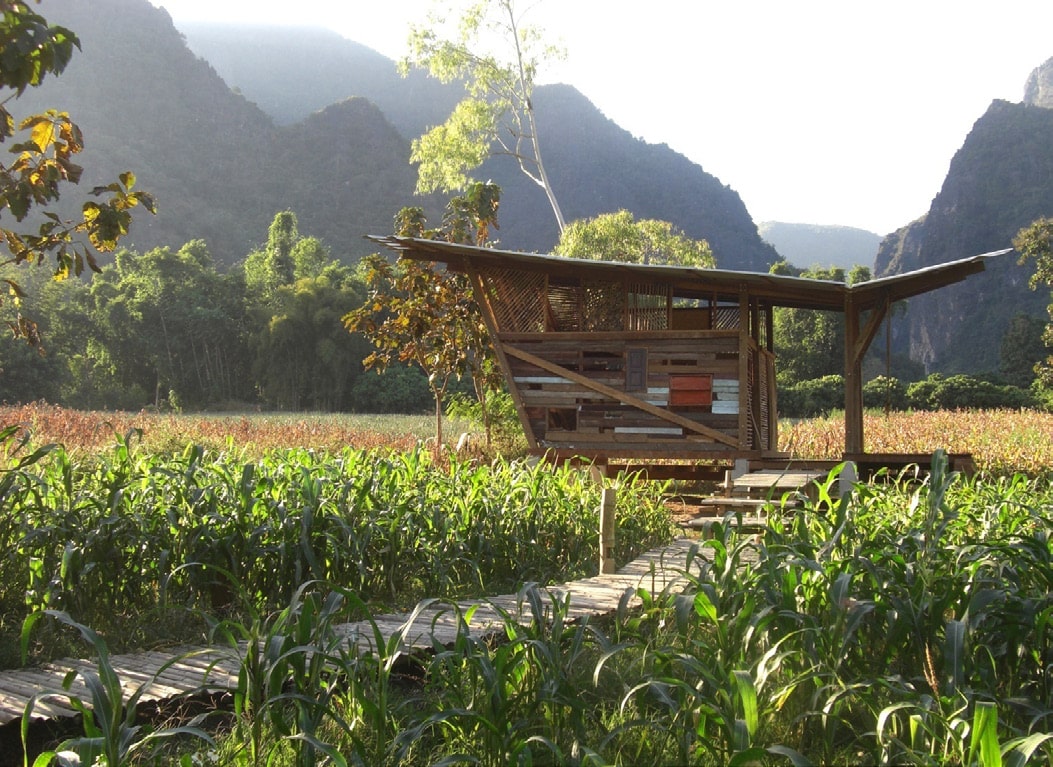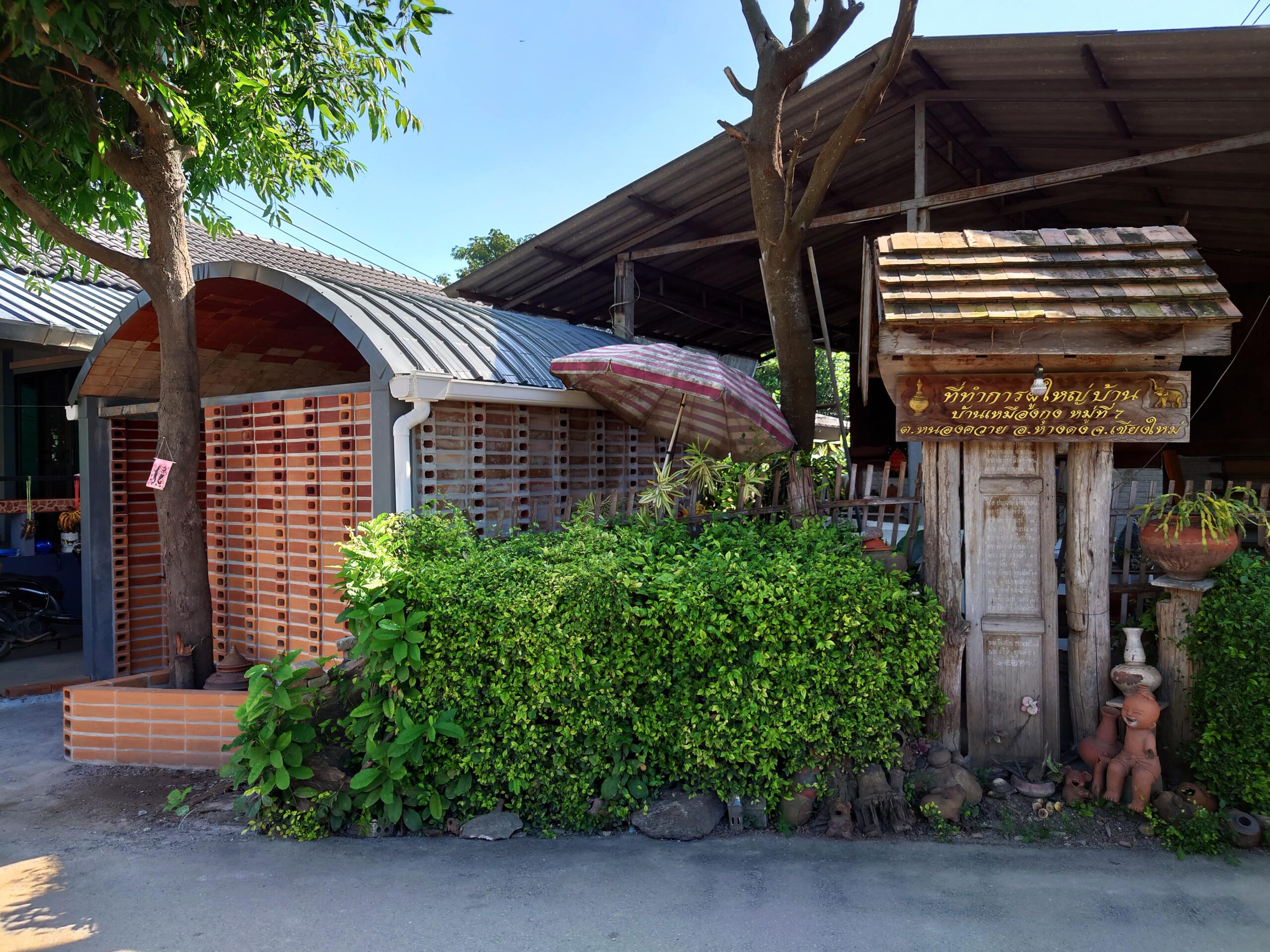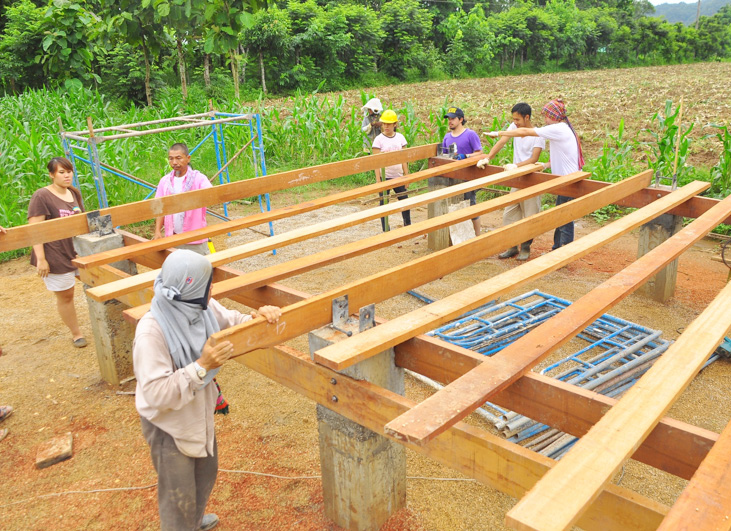The students designed and built a public gathering space at the base of the Doi Nang Non mountain range, specifically for the agricultural community. They opted for a combination of bamboo and local hardwoods as construction materials, chosen for their natural resistance to rot and pests. To tackle the problem of soil erosion on the steep slope, they incorporated planting areas and water canals. Additionally, considering the village’s lack of electricity, solar-powered lights were included in the project. This initiative not only provided a functional space for the community but also showcased sustainable practices in materials, landscape management, and renewable energy use.

Related Projects:

Ton-Tao Ceramic Pavilion
The Baan Mueng Goong Ceramic Pavilion reimagines a gallery for ceramic works. Inspired by the village’s ceramic kiln reflecting the history of their craftsmanship, the gallery creates an immersive experience resembling the interior of a large kiln surrounded with ceramic pieces crafted by the villagers of Baan Mueng Goong. The design includes ceramic bricks, ceiling tiles, and a cladding system to provide protection from the sun and rain, as well as improved airflow features. The pavilion’s gradient colors on the brick walls and ceiling tiles resemble the heat’s effect when firing ceramics. Within the interior is a showcase space using wooden wall-mounted displays designed and constructed to fit perfectly into the original brickwork of the Mueng Goong village. These elements are designed to be rearrangeable, allowing for various display styles. Moreover, they can be adapted for future displays of additional ceramic works. The pavilion not only gathers various craftsmanship from the community but also creates a place for visitors to learn and embrace ceramic works.

The Chinatown Effect: Authentic Trans-Territorial Pavilion
Students constructed a pavilion made with metallic frames and scaffolding, covered with fabric surfaces and crafted model units. The pavilion itself is a geometric, material, and spatial manifestation of shared stereotypical ‘Chinatownising’ forces: an inhabitable red and gold folie or a purposely architectural cliché. Once inside, a trans-territorial ‘Chinatownised’ world is represented through edited videos on multiple screens. Moments, public rituals, and private objects from Yaowarat are displayed; then, with the contribution of a network of friends living in various international Chinese communities, students accurately and playfully paired them with similar but geographically displaced settings. This series of crafted mutual copies highlighted invisible cultural clashes and subtle aesthetic overlaps. Welcome to the realm of authentic replicas.
